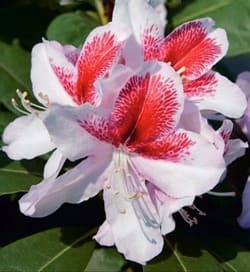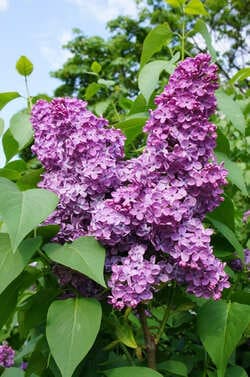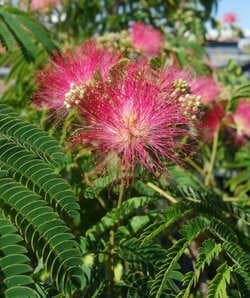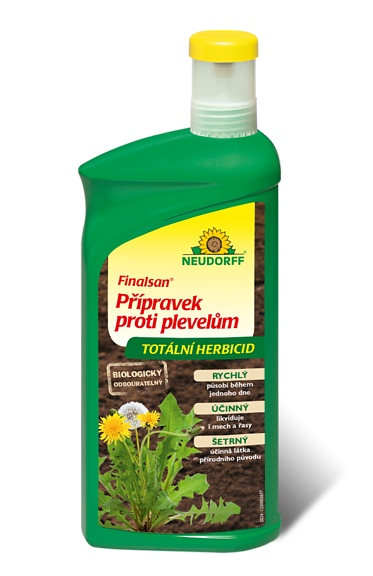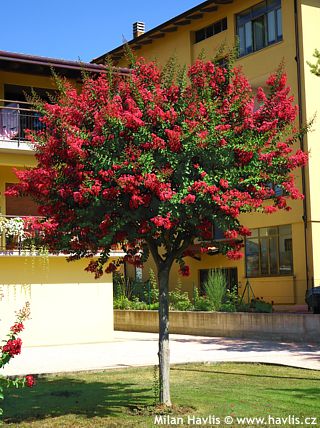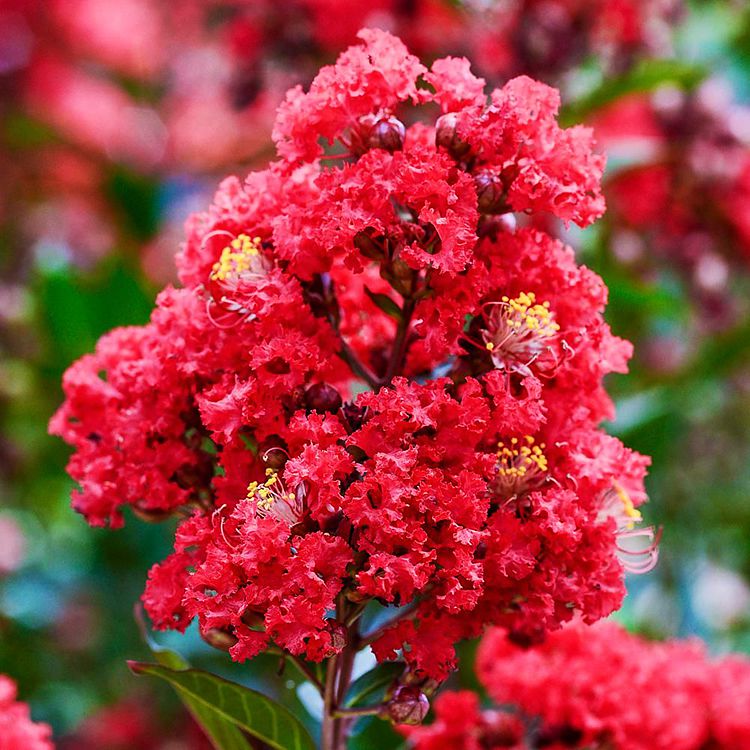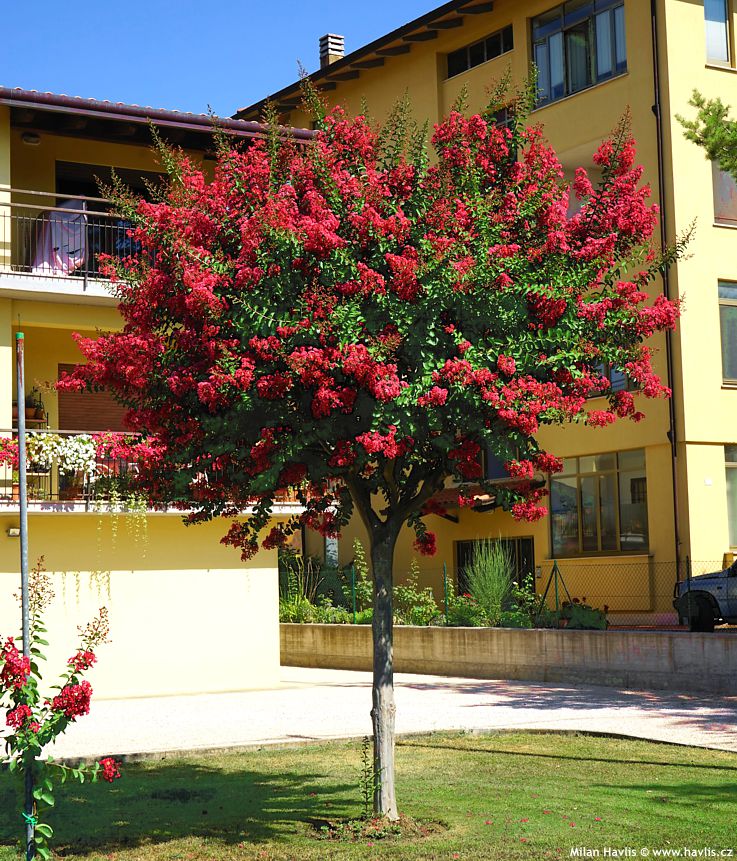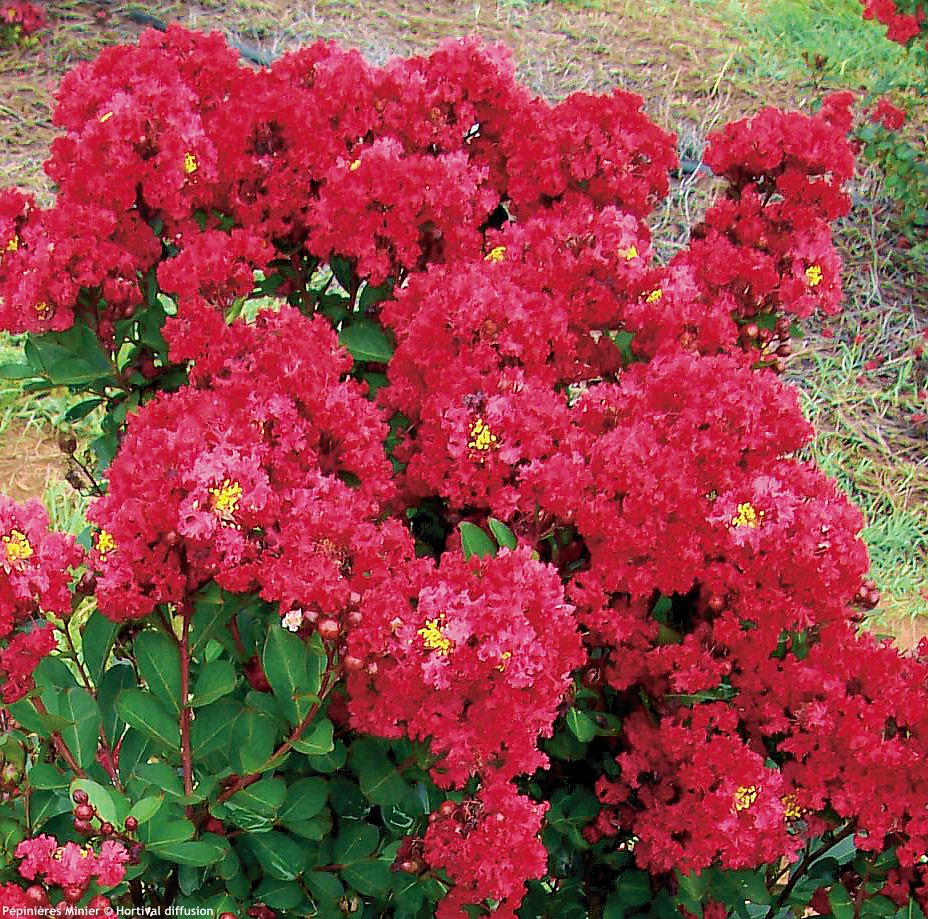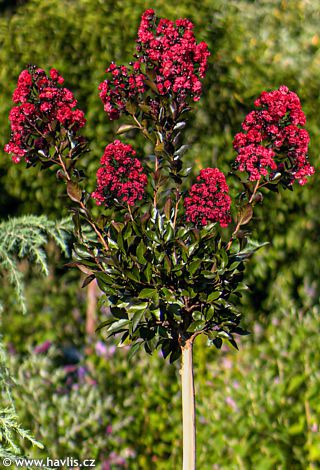Lagerstroemia 'Piilag B5' ENDURING SUMMER® RED crepe myrtle - STANDARD TREE


Lagerstroemia
Crepe myrtle is a flowering shrub or a small tree from China. It was first introduced to the USA and the UK in the 18th century. The original plant lagerstroemia indica is too tender and not too pretty so breeders were working on further hybridization and the most attractive varieties available now are believed to be results of crossing with l.speciosa and l.fauriei. Far more important news for us is the fact that among those finished plants were selected others that survived lower temperatures than what was common in the areas of natural habitat so we have a few myrtles that can grow even in our climate. Some were selections, other consequent hybrids.
ENDURING SUMMER® is an American crepe myrtle series bred by Joshua H.Kardos. The plants boast compact, rounded habit and excellent resistance to diseases. ENDURING SUMMER® RED produces vibrant red purple flowers composed in large racemes, like those on lilacs hence its other name summer lilac. Flowers are produced from late August in C.E. climate and continue blooming for 4-6 weeks. Deciduous leaves are 3-4 cm long, elliptic to obovate, very glossy, mid green in summer, turning burgundy red, scarlet red, and orange in autumn. Older plants reveal cinnamon red flaking-off bark which soon shows a mosaic like that on plane trees. It grows slowly into a densely branched shrub about 1.5m tall and wide. Patented as PP25925 in 2015.
This is a tree form (standard tree) of crepe myrtle. Plants are either grafted on l. indica rootstock or grown from cuttings of the variety. Remember that the trunk height you see in a nursery will remain unchanged in future, i.e., if you buy a half-standard with a trunk height of one meter it will not grow taller, only thicken. Therefore, if you are looking for a taller trunk in maturity you have to buy a tree with a trunk of the desired height now. The canopy of ENDURING SUMMER® RED crepe myrtle is dense and upright.
Crepe myrtle needs little care. They need full sun with zero shade during the day. Pruning will secure profuse flowering: cut back last year's growth to about a third of its original size. Do so in spring after danger of frosts. But if you are looking for a large plant do not prune at all, just remove bottom branches so it can soon reveal its beautiful bark.
Grow it in well-drained soil that should be kept moist before it gets fully established. Some sources say that plants do well in slightly acidic soil but as far as it is not water-logged they will grow in any fertile soil. However, acid soil enhances autumn foliage colour. It needs heavy mulching in winter and some mulch in summer to retain moisture. Overfertilizing will cause excessive growth but no flowers. Hardiness of standard trees varies with rootstocks: plants grafted on l. indica withstand -17 °C (USDA zone 7), but trees produced from cuttings or grafted on self are hardy to about -21 °C (USDA zone 6).
Last update: 01-02-2023

8 160 Kč
Goods are shipped all over Europe. For Russia and U.K. and for further details please read about SHIPPING OPTIONS HERE.
Are you interested in a serious discount for orders NOV-FEB? Check your options here.
THE PRICES INCLUDE VAT of 15%. For quick conversion you can use 1 CZK = approx. 0.04 EUR
- STANDARD QUALITY - Plants of this group are 1st class quality with number of branches and overall density adequate to their size and age, considering they were container grown.
- DE LUXE QUALITY - This label guarantees a luxurious quality of manually selected plants that, compared to their height and age, are exceptionally dense and beautiful.
- EXTRA - These plants are usually mature and bigger specimens with exceptional overall appearance.
- STANDARD (as described in the plant form) means a tree with a trunk of 190-210 cm and a crown at the top, unless specified differently. The commercial size for trees is their girth measured in the height of 1m from ground.
- HOBBY - These plants are of the same quality as our standard-quality plants but younger and therefore cheaper.
- SHRUB - a woody plant with branches growing bushy from the ground level.
- HALF-STANDARD or MINI-STANDARD - a small tree with shorter trunk, its size is usually specified.
- FEATHERED - These are trees with branches growing already from the base of the trunk and up along the stem.
- GRASSES and PERENNIALS - Sizes given usually read the diameter of the pot or the clump, as specified.












